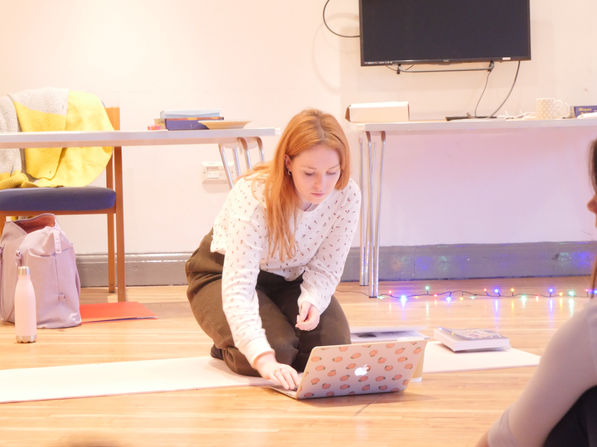FACILITATOR TRAINING
Dancing Mindfulness Facilitator Training:
If you are currently teaching any type of wellness-related class (Yoga, Pilates, Tai Chi, Dance), if you are a school teacher, or a licensed/trained helping professional of any kind (e.g., counsellor psychologist, social worker, nurse, psychiatrist), you are welcome to take this facilitator training intensive! You MUST complete the whole training to be awarded certification on behalf of The Institute for Creative Mindfulness.
Certification Information:
Upon successful completion of all required sessions led by Truefitt Collective, you will be eligible to receive certification as a Dancing Mindfulness instructor on behalf of Dr. Jamie Marich and her training organisation; The Institute for Creative Mindfulness.
-
This certification can be used as verification of your training to facilitate classes in Dancing Mindfulness at whatever venues are within your scope of experience.
-
If you miss any of the training sessions for any reason, it is your responsibility to make up sessions with Truefitt Collective on a private basis; fees may apply.
-
Certification in Dancing Mindfulness does not include any insurance, you are responsible for purchasing insurance for your classes before running them.
Training Objectives:
After completing the facilitator training in Dancing Mindfulness, participants will be able to:
-
Define mindfulness from several different perspectives and explain how movement practices can fit the definition of mindfulness.
-
List the seven primary qualities of mindful living as described by Jon Kabat-Zinn and explain how these relate to human wellness.
-
Discuss the seven elements of the Dancing Mindfulness practice as an expressive arts therapy framework (i.e., breath, sound, body, mind, spirit, story, and fusion) and how each of the elements can be used to practice the qualities of mindful living and align with other clinical applications of mindfulness
-
Identify at least three elements of psychotherapeutic approaches that appear in Dancing Mindfulness.
-
Describe the benefits of a movement-based, holistic practice for emotional healing.
-
Define what it means to be a trauma-sensitive professional, discussing how to keep a group of people safe, either in a community or clinical setting.
-
Explain the rationale of accessing body-based coping as optimal for recovery and wellness.
-
Facilitate a group of individuals in the Dancing Mindfulness practice.
-
Describe the subtle differences between facilitating Dancing Mindfulness in community versus clinical settings and apply them accordingly.
-
Explain how dancing and other movement-based or spiritually-based practices found in the community qualify as "coping skills" for recovery and wellness.
-
Articulate how engaging in movement-based wellness programs like Dancing Mindfulness can promote one's own sense of self-care as a professional.
-
Present the benefits of a practice like Dancing Mindfulness in your community to yoga studio owners, clinical/program directors, etc.
Training dates:
-
Sunday 19th January 2020 9am - 6pm & Sunday 26th January 2020 9am - 6pm (Phoenix Academy, Edmonton, London)











